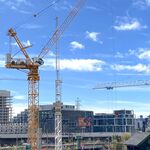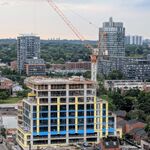James: A path to transit compromise
Published On Fri Dec 03 2010
By Royson James City Columnist
Mayor Rob Ford wants subways and vows there will be no more rail lines built down the middle of Toronto’s roads.
The province of Ontario, its transportation agency Metrolinx, the TTC and Toronto City Council agreed in 2007 to do what Ford now rejects.
So, is Toronto doomed to a decade — or at least four years under Ford — of transit stall? Or is there room for compromise?
To reach a reasonable conclusion, read between the lines, listen to the carefully crafted words, understand the politics, and recall the history of transit decision making. It all points to a rescue plan, six months to a year hence — if all goes well.
Just what is Ford saying? First, he wants new transit only where it doesn’t replace existing lanes of traffic. Toronto isn’t building more highways and more roads. So, to co-exist, transit must go under or over or around, just not exclusively on the existing streets. If that view holds, suddenly, SkyTrain and other elevated transit becomes part of the future, though Ford talks subway.
Secondly, Ford says he wants a subway to Scarborough. He identifies Sheppard East as his top-priority route, and his transit map envisions the Bloor-Danforth line linking with the Sheppard subway, via a subway along the Scarborough RT route.
But what if fiscal reality sets in, and it certainly will, and neither federal nor provincial government offers to fund his divergent vision? What if all Ford can muster is an extra $1 billion? Then, turning the Scarborough RT into a subway — which it should have been in the first place — allows Ford to win a subway to Scarborough. And it opens the door to save other parts of the Transit City plan.
What is Queen’s Park saying?
First, ignore the statements about how Ford’s views must be in sync with council’s and the TTC’s before the province even considers them. Of course. And they will. The TTC will be reconstituted next week and Ford followers will have the majority vote.
Since council approves all budgets, city council will have a say. But council will not stop a “study†of subway options. The Scarborough councillors will line up behind Ford, all the time claiming they are doing their due diligence.
What Queen’s Park supposedly wants is a regional plan that benefits and links Toronto, via the GO network and other transit systems, to the rest of the GTA and Hamilton. As such, the Eglinton Crosstown line is untouchable. It eventually runs west to the airport and east to near Durham, linking with GO lines along the way.
Fortunately, there is room for compromise here, too. There is no quarrel with the portion of the Eglinton LRT that runs between Black Creek Dr. and east of Bayview. It runs underground as a subway. Metrolinx official said Friday the tunnel will be big enough for conventional subway trains, should that be the use in the future, beyond 2031.
But for Eglinton to fulfill its regional mandate it must go east and west beyond the underground segment. Can it be elevated, once it reaches Scarborough and west in Etobicoke? There is even enough room west of Royal York for it to run off-street.
So, a great transit compromise is possible, solving the potential stalemate.
One, salvage Eglinton, even if it means removing it from the middle of the street. (By the time construction reaches beyond the underground portion, Ford might no longer be mayor.)
And two, build a subway to replace the RT. Ridership on the RT is the closest to subway levels for any of the Transit City light rail routes.
Ford gets his subway. The province gets Eglinton.
Sheppard and Finch? Sacrifices made.
Later: why the “jelly-ike†TTC brass can live with such a plan




